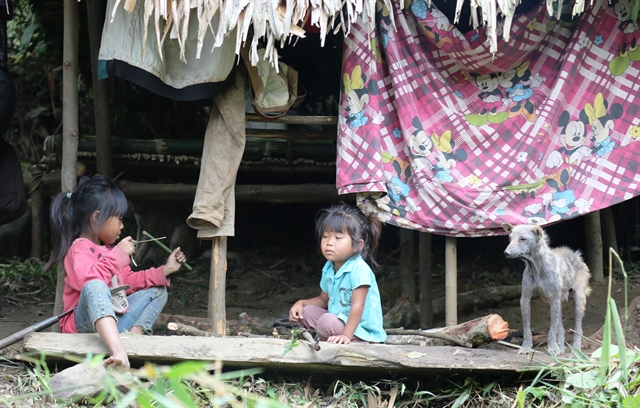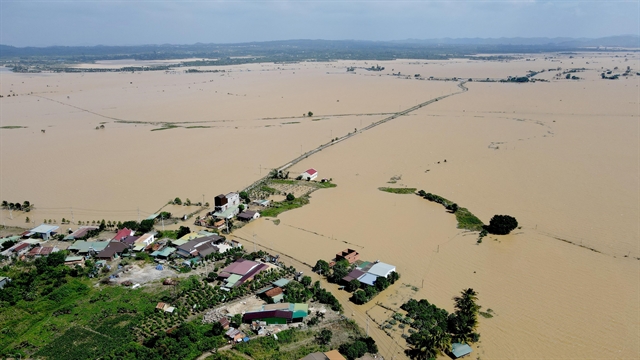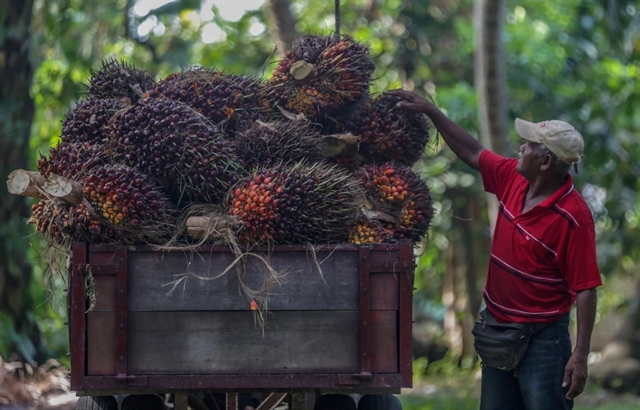 Politics & Law
Politics & Law

Nearly VNĐ272 trillion (US$11.8 billion) will be mobilised to implement the national target programme on socio-economic development in ethnic minority and mountainous areas during 2021-30, according to a Government report submitted to the National Assembly (NA) on Thursday.

HÀ NỘI — Nearly VNĐ272 trillion (US$11.8 billion) will be mobilised to implement the national target programme on socio-economic development in ethnic minority and mountainous areas during 2021-30, according to a Government report submitted to the National Assembly (NA) on Thursday.
The programme sets the target of doubling the income per capita of people from ethnic minority groups in the next five years compared to the current rate (VNĐ1.1 million to VNĐ1.2 million per month per person).
By 2025, it aims to improve infrastructure, create jobs and address pressing issues of more than 16,100 households from ethnic minority groups and disadvantaged ethnic groups.
By 2030, income per capita of people from ethnic minority groups is hoped to be raised to half of the national average. The programme also aims to cut the number of poor households to less than 10 per cent of the total number of households, with no hamlets or communes classified as in extremely difficult conditions and 70 per cent of communes in ethnic minority and mountainous areas meeting new rural area criteria.
At the NA session in the morning, Đỗ Văn Chiến, chairman of the NA Commission for Ethnic Minorities, said the national target programme will boost socio-economic development in these areas and reduce poverty.
The programme will set multiple targets in socio-economy, national defence-security, environment and biodiversity protection, and grassroots political system construction, he said.
NA deputies said as the State budget is currently unable to afford the programme’s investment, the Government should consider the feasibility of projects and focus on improving local livelihoods and infrastructure in dire need.
Funding should also be prioritised to provide houses, production land lots and water for ethnic minority people.
On the sidelines of the NA discussion on the programme, Đào Văn Mái, deputy head of northern mountainous Cao Bằng Province’s ethnic minority commission, proposed the programme focus on training high-quality human resources and allocating loans for minority's production.
Ethnic minority areas need investment in transport, irrigation system, electricity, schools and economic structure transition to reduce poverty, he told the Vietnam News Agency.
Tô Ái Vang, deputy head of NA delegation of southern Sóc Trăng Province, said he expected the programme to be comprehensive and inclusive, and not overlap with national target programmes on new rural area construction and sustainable poverty reduction.
While improving the socio-economy in the areas, the programme should preserve the cultural identities of ethnic groups and uphold national unity as well, he said.
Forest fires
Forest fires should be reclassified as a special type of disaster, so more can be done to prevent them in the future. That was the message from Phan Xuân Dũng, chairman of the National Assembly (NA) Committee on Science, Technology and Environment, who was addressing the National Assembly on Thursday.
He proposed the Government should stipulate different levels of fires and make amendments to the Law on Natural Disaster Prevention and Control.
That way, it could be determined if fires were caused naturally or deliberately and work can be carried out to prevent them happening again.
The prevention and fight against forest fires has been regulated in specialised legal documents on forestry, fire prevention and fighting fires. However, due to the adverse effects of hot weather, prolonged drought, the risk of forest fires in many provinces and cities of the country is always high, and potential to become large scale blazes.
The NA Standing Committee (NASC) suggested serious forest fires need to be considered as a specific type of natural disaster so that more proactive measures in prevention, controlling and mobilising resources to deal with the blaze are needed, he said.
Earlier, a number of NA deputies proposed adding other incidents including tidal waves, whirlwinds and extreme frost to the draft law’s list of natural disasters to facilitate the work.
However, the NASC didn’t agree with the proposal, saying these incidents were already represented in the law. Tidal waves are a type of flood while frost is a combination of cold weather and fog, Dũng said.
Trương Thị Yến Linh, a NA deputy from Cà Mau Province, expressed her objections.
“These phenomena have been confirmed by the Ministry of Natural Resources and Environment and the Ministry of Agriculture and Rural Development as consequences of natural disaster which affect the lives of local residents,” Linh said, suggesting it should be added to the draft law.
She also proposed that the law should take effect from the beginning of next year to create legal foundations for disaster response.
Fund for Disaster Prevention and Control
The majority of deputies agreed on the need to set up the Central Fund for Disaster Prevention and Control. However, they said, it was necessary to clearly define the financial resources for the fund as well as its operating principles.
According to the NASC, the establishment of the fund was necessary to receive and use international support, Dũng said, adding that good coordination between funds at provincial and central levels was a must to ensure its flexibility.
The demand for this fund was high in localities where natural disasters frequently occurred but there was large surplus in some localities with lower frequency, he explained.
Nguyễn Xuân Cường, minister of Agriculture and Rural Development, said the establishment of the fund at central level helps enhance the effectiveness of its disbursement. — VNS




